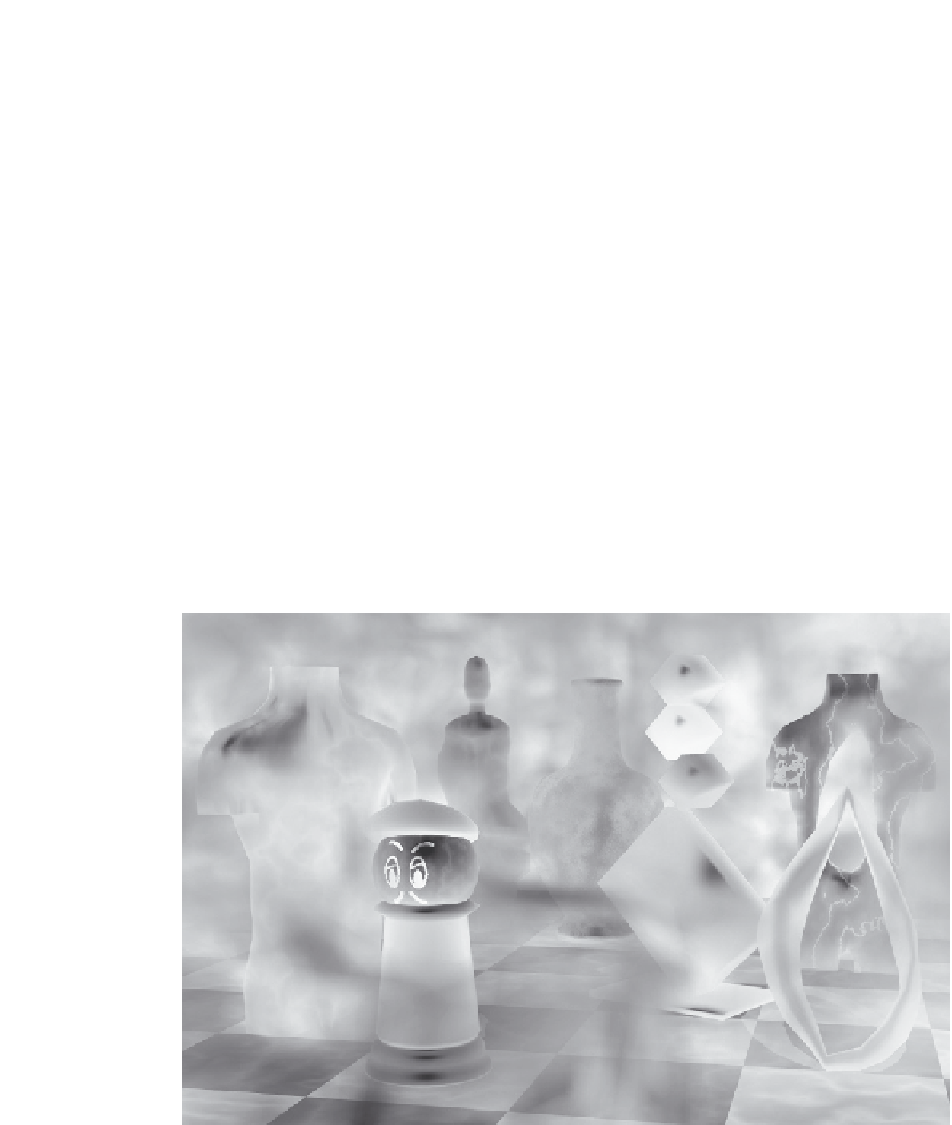Graphics Reference
In-Depth Information
10.2
Facial models
Depending on the objective of the animation, there are various ways to model the human face. As with
all animation, trade-offs include realism and computational complexity.
If a cartoon type of animation is desired, a simple geometric shape for the head (such as a sphere)
coupled with the use of animated texture maps often suffices for facial animation. The eyes and mouth
can be animated using a series of texture maps applied to a simple head shape (see
Figure 10.4
).
The nose and ears may be part of the head geometry, or, simpler still, they may be incorporated into
the texture map.
Stylized models of the head with only a pivot jaw and rotating spheres for eyeballs that mimic the
basic mechanical motions of the human face may also be used. Eyelids can be skin-colored hemi-
spheres that rotate to enclose the visible portion of the eyeball. The mouth can be a separate geometry
positioned on the surface of the face geometry, and it can be animated independently or sequentially
replaced in its entirety by a series of mouth shapes to simulate motion of deformable lips (see
Figure 10.5
,
Color Plate 9). These approaches are analogous to techniques used in conventional
hand-drawn and stop-motion animation.
For more realistic facial animation, more complex facial models are used whose surface geometry
more closely corresponds to that of a real face, and the animation of these models is correspondingly
more complex. For an excellent in-depth presentation of facial animation see the topic by Parke and
Waters [
25
]. An overview is given here.
FIGURE 10.4




Search WWH ::

Custom Search